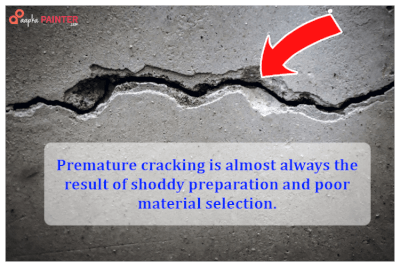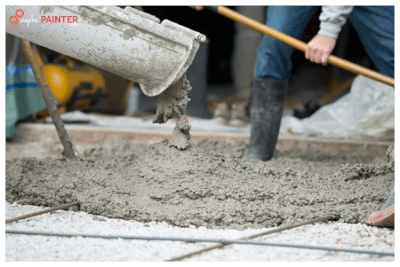Table of Contents
Concrete is one of the most commonly used construction materials at present. It is known for its exceptional level of hardness, strength, durability, and stability. Plus, concrete can be mixed with different types of aggregate to form a much stronger mix. From buildings to roads and driveways, most structures are made from concrete. And we aren’t just talking about surface construction.
Instead, concrete is also used to form the foundation structures. For instance, it is poured between a vertical arrangement of steel rods to form the columns or over the horizontal wire slabs to form the ceiling and roof. Therefore, concrete is the main raw material used in modern construction projects.
However, this material has a fair share of disadvantages. One of them is the change in volume with time. Due to this, there are several problems the construction workers need to address. waterproofing services.
In this article, we have explained the problems that can occur due to the expansion and contraction of concrete and the causes: waterproofing services .
Can concrete contract or expand like metal?
Yes, the concrete expands and contracts with time. It is different from the process of curing and hardening. Concrete shrinks slightly in volume in the latter due to drying and water evaporation once it sets and hardens completely. But this doesn’t mean there is a huge difference between the initial and the final volumes. waterproofing services.
We’re talking about the expansion and contraction of the concrete structure once it hardens and is exposed to different weathering conditions, especially temperature. If the temperature changes, the concrete’s volume will also change. It might not happen as fast as that of metals, but the changes in volume are significant once we compare them over a span of time.
What causes expansion and contraction in concrete?

The main causes of concrete expansion and contraction are exposure to changing ambient temperature. For instance, when the temperature rises and the concrete surfaces are exposed to the same, they can absorb moisture and increase in volume in the summer season. Similarly, when the temperature drops significantly in the winter season, the concrete structures shrink in terms of volume.
The temperature might be the prime reason due to the change in the volume of hardened concrete. But it also depends on several other factors. In the following example, we will discuss these factors briefly and their contribution to the expansion and contraction of concrete : waterproofing services.
- Cement-to-water ratio: Since cement and water are the two major raw materials used to manufacture concrete, it is important to consider the volume of water added. For instance, if water is present more, it can dry and cause the concrete to shrink in the summer. Similarly, in the winter, if the temperature is 4 degrees Celsius, water will expand, causing an increase in the concrete volume.
- Cementitious material content: Often, different aggregates or cementitious materials are added to concrete to increase its strength, aesthetics, and so on. These materials have different coefficients of thermal expansion. Based on that, the change in the volume of the concrete structure will vary. For example, marble has a smaller coefficient of thermal expansion than limestone. So, concrete mixed with marble won’t expand or contract much compared to concrete mixed with limestone.
- Age: Concrete expansion and contraction highly depend on the age of the structure. For instance, a concrete structure aged 5 years will have more volume than the original measurement due to prolonged exposure to temperature change, moisture absorption, surface erosion, and so on. On the other hand, if we consider a concrete structure of 1 year old, its volume change won’t be much.
- Humidity: The expansion and contraction of concrete will also depend on the humidity in the atmosphere. The more the humidity, the more moisture content. An exposed concrete surface can absorb the moisture and swell up from within, causing expansion. Similarly, if the humidity is less, the moisture content in the atmosphere will be less. Water in the concrete will evaporate to fill the gap, causing the structure to shrink in size. In this case, the expansion and shrinkage of the concrete structure are not usually noticeable until and unless the structure is exposed to the weather for a prolonged time. waterproofing services.
What can happen if the concrete is left to expand or contract?

One has to deal with several consequences if the concrete is allowed to expand or contract over a long time. As many might not know about these consequences, we have described the following in this section below.
- Cracks: The formation of cracks is one of the most prominent side effects of the contraction and expansion of concrete. When it expands, the cracks are wider at the top and narrower as you move deeper. On the other hand, when the concrete structure shrinks, the cracks formed are narrower at the top and wider as you go deep. Due to the formation of cracks, surface erosion increases, water can easily seep through, and the entire structure is weakened.
- Accidents: When the concrete structures expand or contract without limit, the surface loses its uniformity. As a result, there can be accidents. For example, if we consider a construction joint that is fixed and immovable, expansion of the structures will cause the floor to swell at the joint. Anyone walking over the area will get hurt.
- Collapsibility: The chances of collapsibility increase with the increase in the expansion or contraction of the concrete structures. First, if concrete expands or contracts, it loses its strength. Therefore, the structure can easily collapse when exposed to mechanical forces like a collision.
- Reduced lifetime: Without a doubt, expansion and contraction of concrete structures can reduce the lifetime of the material, exposing the same to vulnerabilities and fragile nature. Therefore, it is crucial to address the issues at the earliest.
Conclusion
In this article, we have walked you through the major details of the anomalous behavior of concrete when subjected to different conditions. It can expand or contract, having a varied volume than the original one. waterproofing services are available.
Since the changed volume can cause many problems, construction workers must gauge the consequences and design the architecture accordingly. Also, the aggregates mixed in concrete should be such that the volume change rate can be minimal.
